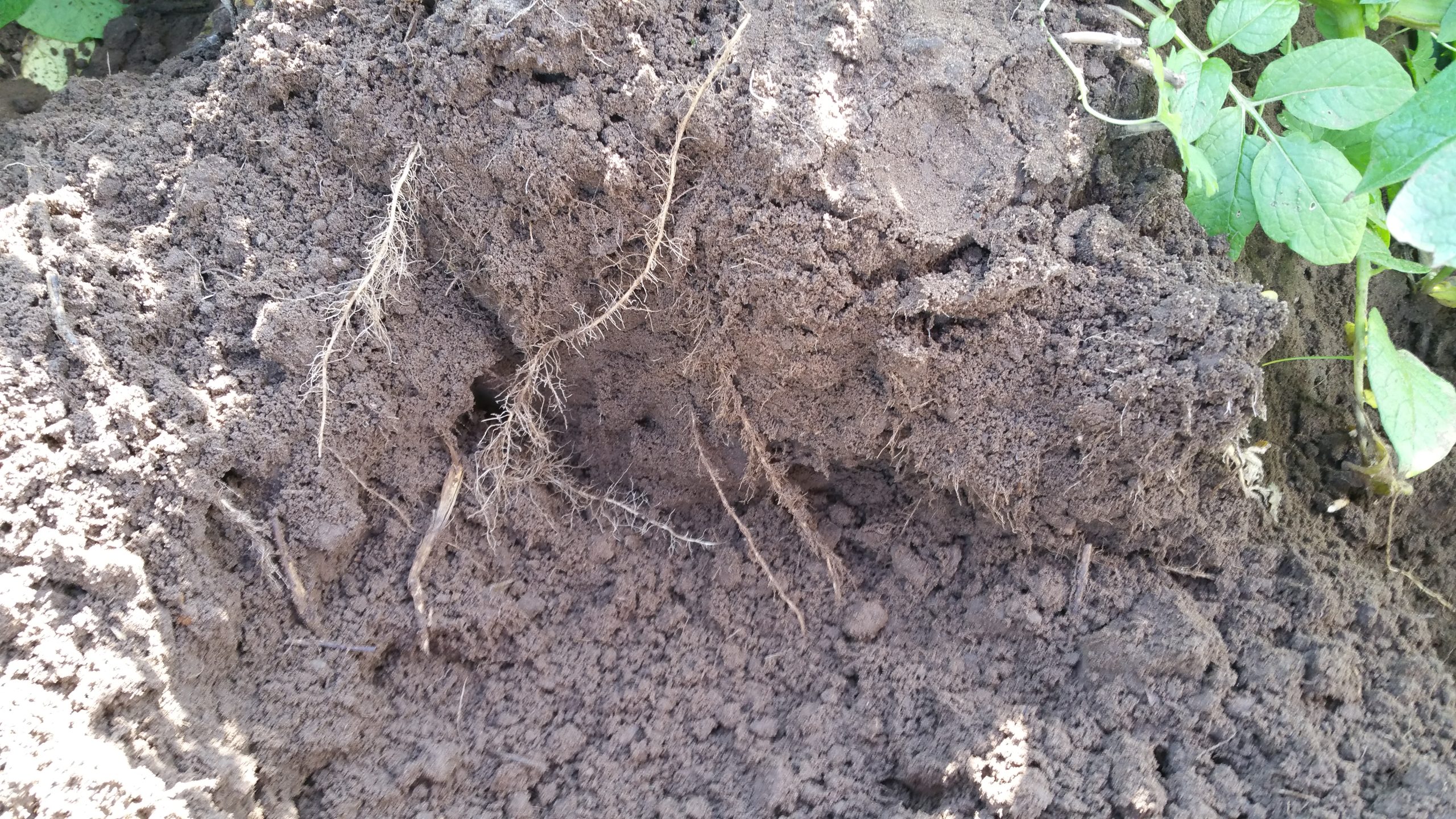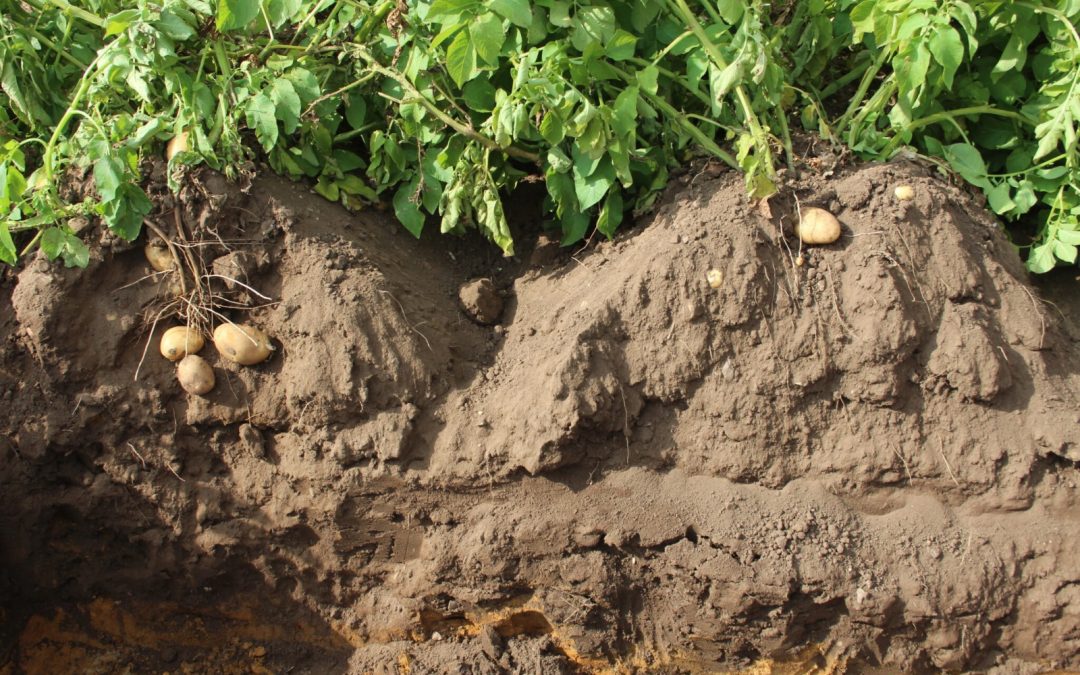Soil health is a phrase that has been climbing up the agricultural, sustainability and political agendas in recent years and is fast becoming quite a meme. As with many clichés, it can mean many things to many different parties, but what should it mean to farmers and growers? And what are the top three things that can be done to improve the health and vitality of fields for this and following seasons?
In simplistic terms soil health can be defined simply as a soil’s ability to function and sustain plants, animals and humans as part of earths ecosystem. This definition means to survive rather than to thrive.
To meet the world’s increasing nutritional demands, with intensifying desertification, agricultural soil’s ability to merely support life is not enough, productive agricultural land needs to thrive to enable maximum production year on year.
A thriving soil has five key indicators:
- Soil structure – will have a good ‘tilth’ with a labyrinth of pore spaces that allow water to drain freely and the free movement of air. Roots will be able to grow and expand easily through the soil.
- Soil chemistry – pH, and the level of available nutrients, anion storage capacity and cation exchange.
- Organic matter – the level of plant and animal tissue at various stages of decomposition, ideally between 3% and 6% in a mineral soil.
- Soil biology – will contain a wide range of living organisms that decompose organic matter, providing nutrients for crop growth.
- Water filtration, retention and movement – the ability of water molecules to move through the soil preventing or facilitating water logging.
The importance of soil management and soil organic matter has been highlighted by its inclusion within the Sustainable Farming Incentive, module SAM1 – ‘Complete a Soil Management plan including assessing the soil and testing soil organic matter’ allows farmers to claim £95 plus an additional £5.80/Ha for undertaking soil analysis.
Creating and maintaining a thriving soil is a labour of love and dedication, but there are three things that can be done to make a difference this season.
Building organic matter
With the ideal range of organic matter in a mineral soil between 3-6%, if your soils are below 3%, one of the easiest improvements to make is to build up the level of organic matter. This can be done through min-till or no till cultivations for most of the rotation, applications of organic manures, composts or digestates, as well as adding cover crops into the rotation where this fits.
Additionally, minimising excess soil nitrogen levels also contributes to the retention of organic matter, as excess soil nitrogen leads to more rapid breakdown.
Soil organic matter comprises three main components; Plant residues and living microbial biomass, active soil organic matter also referred to as detritus or trash and stable soil organic matter, often referred to as humus.
The first two types of organic matter promote soil fertility because decomposition of these fractions, releasing plant nutrients. The humus fraction has less influence on soil fertility because it is the final product of decomposition, hence the term “stable organic matter” (SOM). However, it is critically important for soil fertility management because it significantly contributes to soil structure aggregate stability, improving water infiltration and soil aeration, reducing run-off. SOM increases the soil’s CEC or its ability to hold onto and supply over time essential nutrients such as calcium, magnesium and potassium. Lastly, it provides a food source for the healthy microbial population – again vital for nutrient supply and minimising soil pathogens.
Active microbial communities
The ability of any additional organic matter to improve the soil chemistry depends on its decomposition, which in turn is wholly reliant on there being a healthy microbial community. These communities can be impaired by both poor cultivation/rotation practices and the overuse of input factors such as fertilisers, fungicides, nematicides and insecticides. Min-till and no-till have become popular practices in recent years, with many benefits. However, these practices have been seen to coincide with a rise in serious pests like wireworm – so it is not all upside! Luckily, non-toxic bioactive control measures are emerging from R&D to tackle such issues.
The microbial population is one of the greatest influencers of nutrient availability and soil health because they help bring insoluble compounds, such as phosphates, into the soil solution. Equally, under the wrong conditions, anaerobic bacteria can reduce the oxygen status of the soil and produce toxic substances.
Following the weather in recent months, soils that have remained waterlogged and cold will have seen a significant reduction in their beneficial microbial populations, which will require additional microbial support in the coming season to re-balance the colonies.
Increasing microbial activity can be achieved by supplementing the soil with a combination of synergistic microbial supplements at planting. Care should be taken to select microbial mixes that are native to the UK.
Understanding soil chemistry
Understanding nitrogen, phosphate and potassium inputs ticks the basic soil chemistry box, but to optimise growth crops require 17 other elements. Some are abundant and in plentiful natural supply. The availability of the remaining elements varies widely in volume and plant-available formats.
Crop nutrient availability is dictated by a wide range of interacting soil factors such as pH, phosphorus sorption index, organic matter, cations, microbial activity and the crop’s own ability to extract these resources – notably root structure development. The amount of nutrients that a crop will require over the season will vary depending on growth stage and weather patterns.
To have an appreciation and basic understanding of the interrelationships between soil elements, regular soil testing is required, with the results enabling nutrient supplementation decisions to be made based on knowledge.
Optimised growth programmes can then be developed that ‘plug the gaps’ in the soil’s natural availability, through nutritional supplementation supporting the current crop and increasing efficiency of inputs – only using what is needed.
Soil health needs to be considered as agriculture’s most fundamental form of asset management as it is the medium in which all crop and forage production is rooted. Therefore, managing the health of this asset is critical to the success or failure of each year’s crop, in short, a lifetime’s work.


